Why Plant Sunflowers: Benefits and Types of Sunflowers to Consider Planting
Sunflowers are a popular and versatile plant that can be grown for various reasons. Whether you want to add some color to your garden, attract pollinators, or harvest their nutritious seeds, sunflowers offer a range of benefits for both gardeners and the environment.

There are many reasons why people choose to plant sunflowers, including:
- Attracting pollinators: Sunflowers produce large, showy flowers attractive to bees, butterflies, and other pollinators. Planting sunflowers in your garden can help support local pollinator populations.
- Edible seeds: Sunflower seeds are a popular snack used to make oil and other food products. Planting sunflowers can provide a source of fresh, homegrown seeds for snacking or cooking.
- Ornamental value: Sunflowers are beautiful, large flowers that can add color and drama to your garden or landscape. They come in various sizes and colors, from tall, towering varieties to compact, multi-colored cultivars.
- Soil improvement: Sunflowers are known for extracting heavy metals and other toxins from the soil, making them a popular choice for phytoremediation projects. They can also help improve soil health by increasing organic matter and promoting beneficial microbial activity.
- Low maintenance: Sunflowers are relatively easy to grow and require minimal care once established, confirming with UMN Extension. They tolerate various soil and climate conditions and thrive in many environments.
Table of Contents
Sunflower Varieties to Consider Planting
Giant Sunflowers
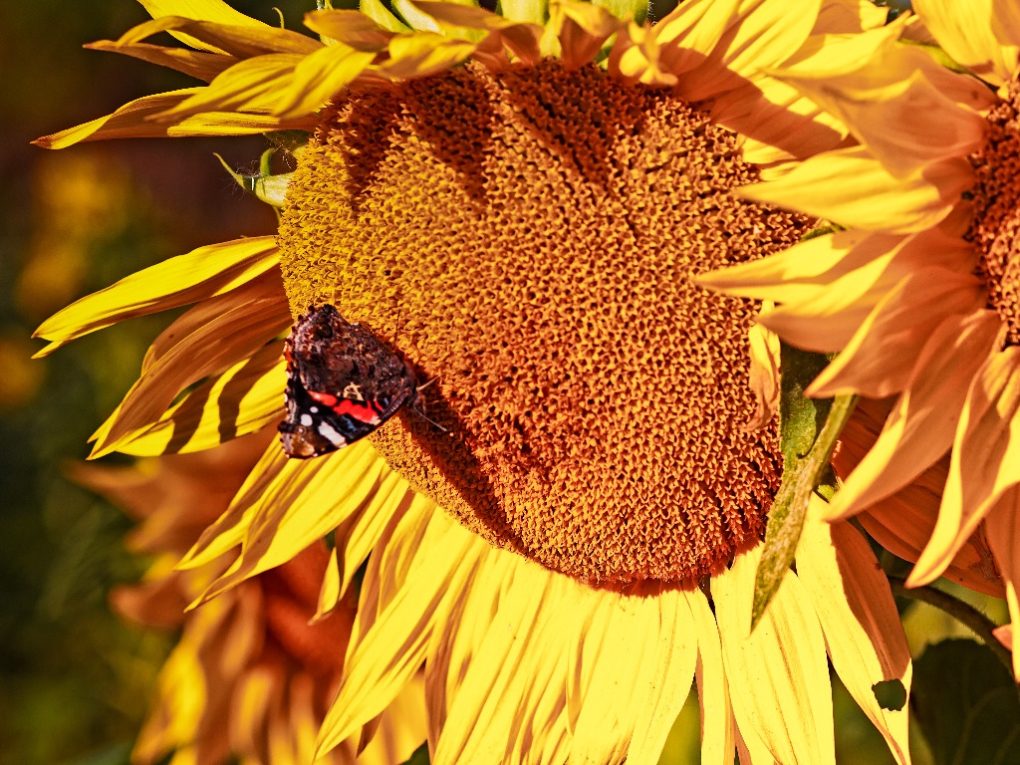
Giant sunflowers, or tall sunflowers, are a popular variety that can grow up to 12 feet tall or more. They are known for their large flower heads, measuring up to 2 feet across, and their ability to add a dramatic statement to any garden or landscape.
When planting giant sunflowers, it is important to space them at least 18-24 inches apart to allow for proper growth and development. They should also be planted in an area sheltered from strong winds, as their tall stalks can be vulnerable to breakage in high winds.
Dwarf Sunflowers
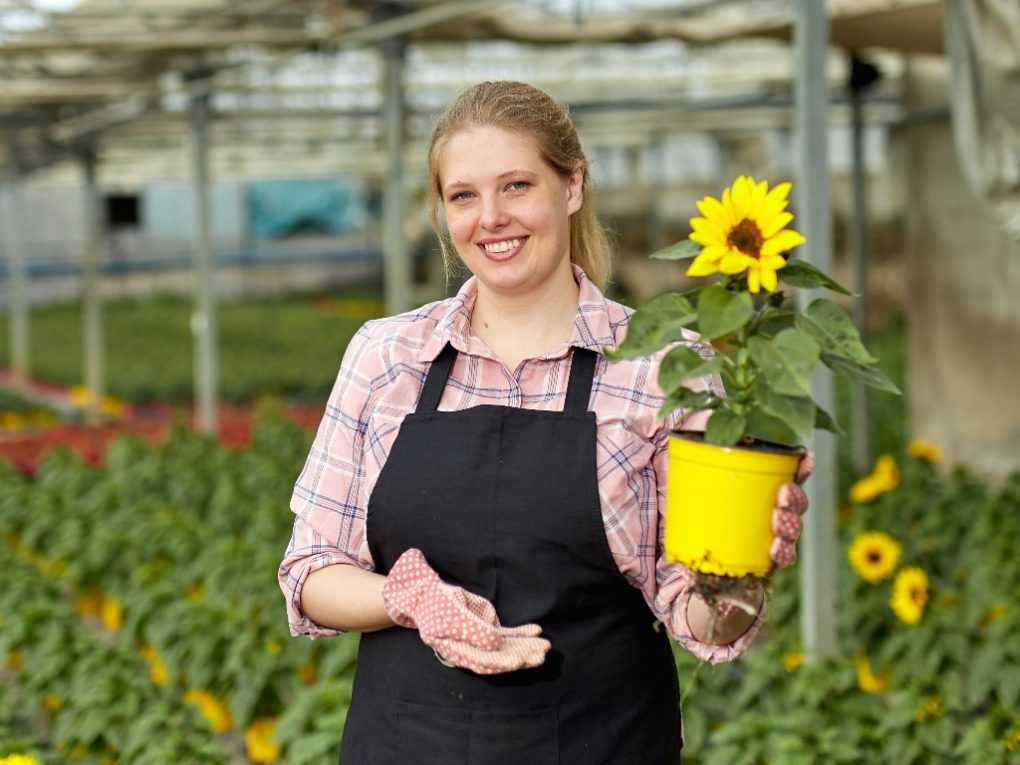
Dwarf sunflowers are a popular variety that grows to a height of only 1-2 feet, making them ideal for small gardens or containers. I’ve plated one of these in my backyard, and it is the cutest flower I’ve seen. They come in various colors, including yellow, red, orange, and even bi-colored varieties.
Dwarf sunflowers are easy to grow and care for, making them a great choice for beginner gardeners. They require full sun and well-draining soil and can be started from seed indoors or sown directly into the garden in late spring or early summer.
When planting dwarf sunflowers, it is important to space them at least 6-12 inches apart to allow for proper growth and development. They should be watered regularly and fertilized occasionally to support their growth.
Red Sunflowers
Red sunflowers are a unique and eye-catching variety of striking red petals and a dark center disk. They can grow up to 6 feet tall and make a bold statement in any garden or landscape.
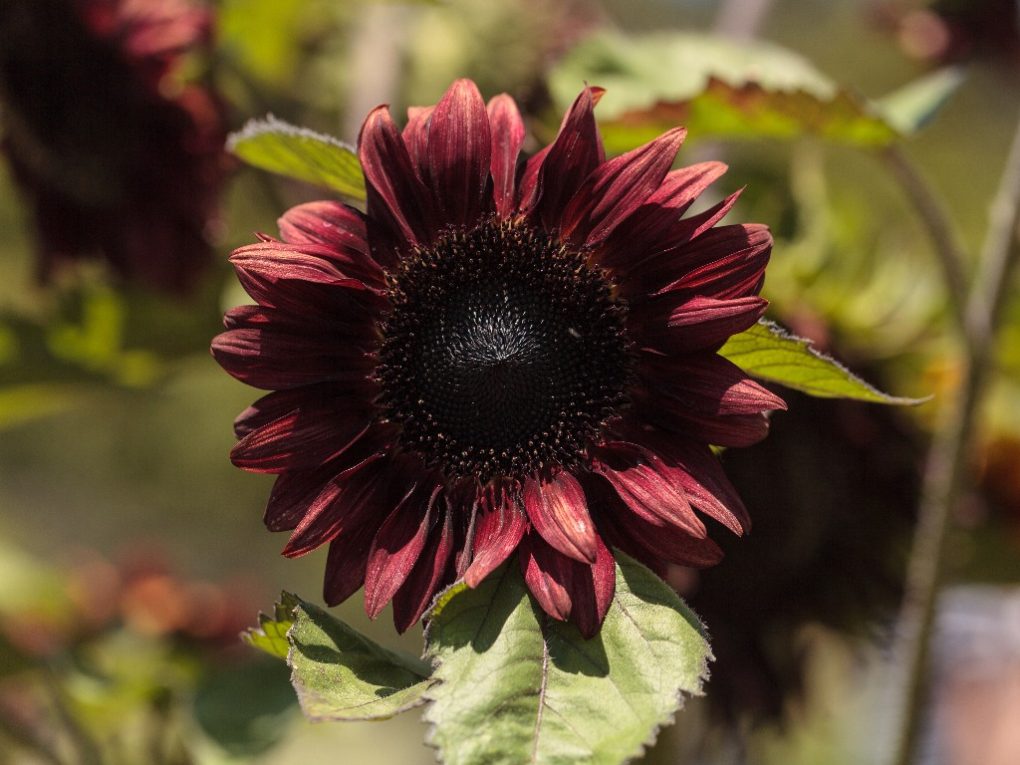
Red sunflowers are a relatively new variety from cross-breeding between traditional yellow sunflowers and other red-flowered plants. They require the same growing conditions as traditional sunflowers, including full sun and well-draining soil.
Red sunflowers can be used in various ways in the garden, including as a focal point or accent plant, in mixed flower beds, or cut flower arrangements. They also attract pollinators like bees and butterflies to the garden.
Multi-Headed Sunflowers
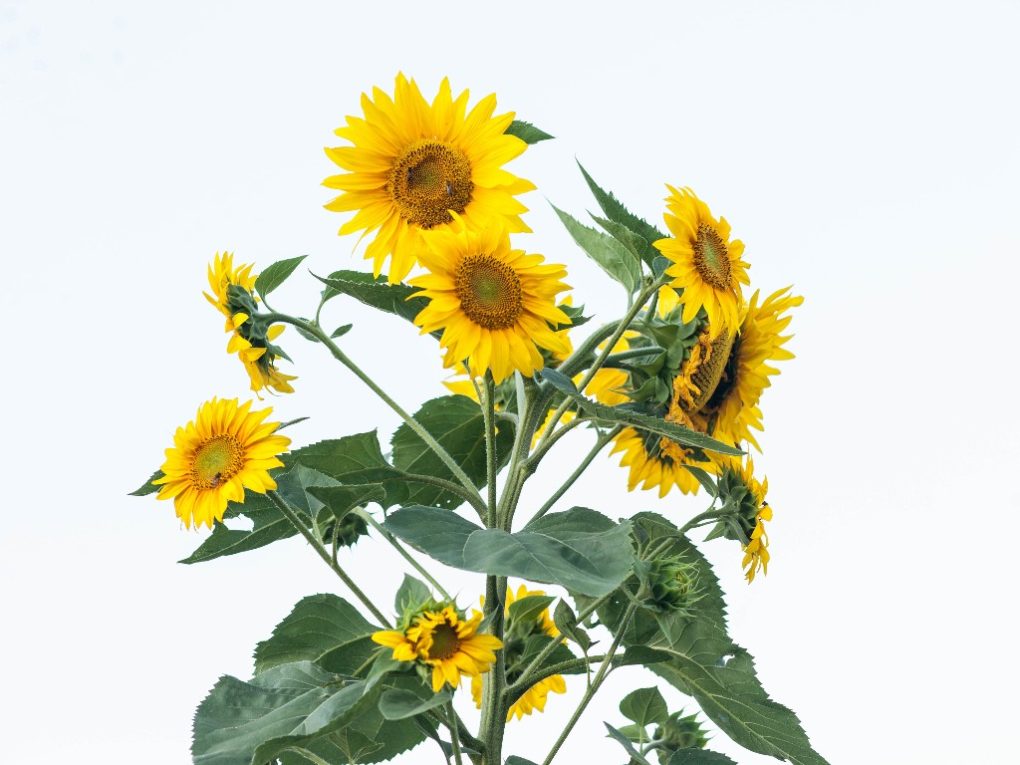
Multi-headed sunflowers, also known as branching sunflowers, are a type of sunflower that produce multiple blooms on a single plant. This makes them a great choice for cut flowers, as they can provide a continuous supply of blooms over an extended period.
Multi-headed sunflowers can grow up to 6 feet tall and require full sun and well-draining soil. They should be spaced at least 18-24 inches apart for proper growth and development. Regular watering and occasional fertilization support their growth and encourage the production of multiple blooms.
When planting multi-headed sunflowers, choosing a variety well-suited to your climate and growing conditions are important. Some popular varieties include ‘Italian White’, ‘Velvet Queen’, and ‘Autumn Beauty’.
Multi-headed sunflowers can be used in various ways in the garden, including as a backdrop or border plant, in mixed flower beds, or cut flower arrangements. Their ability to produce multiple blooms on a single plant makes them a great option for gardeners looking to maximize their flower production.
Chocolate Sunflowers
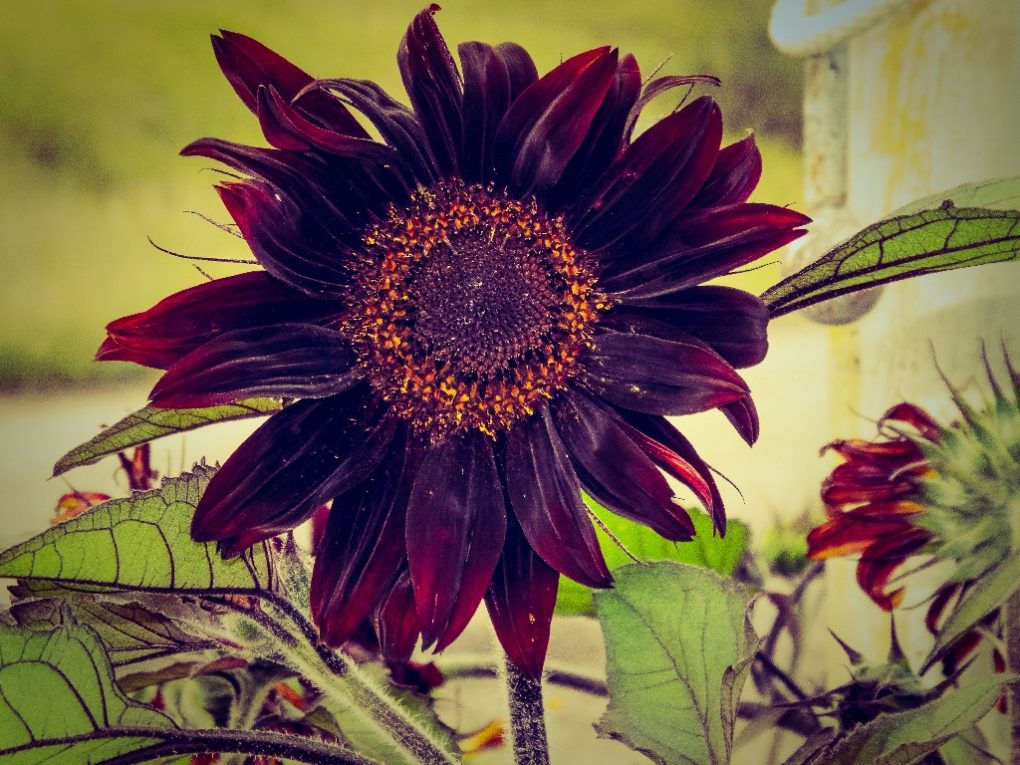
Chocolate sunflowers are a unique and beautiful variety of dark brown or mahogany-colored petals and a dark center disk. They can grow up to 5 feet tall and make a striking addition to any garden or landscape.
Chocolate sunflowers require the same growing conditions as traditional sunflowers, including full sun and well-draining soil. Therefore, when planting, it is important to space them at least 18-24 inches apart to allow for proper growth and development.
Chocolate sunflowers can be used in various ways in the garden, including as a focal point or accent plant, in mixed flower beds, or cut flower arrangements. They also attract pollinators like bees and butterflies to the garden.
Pollen-Free Sunflowers
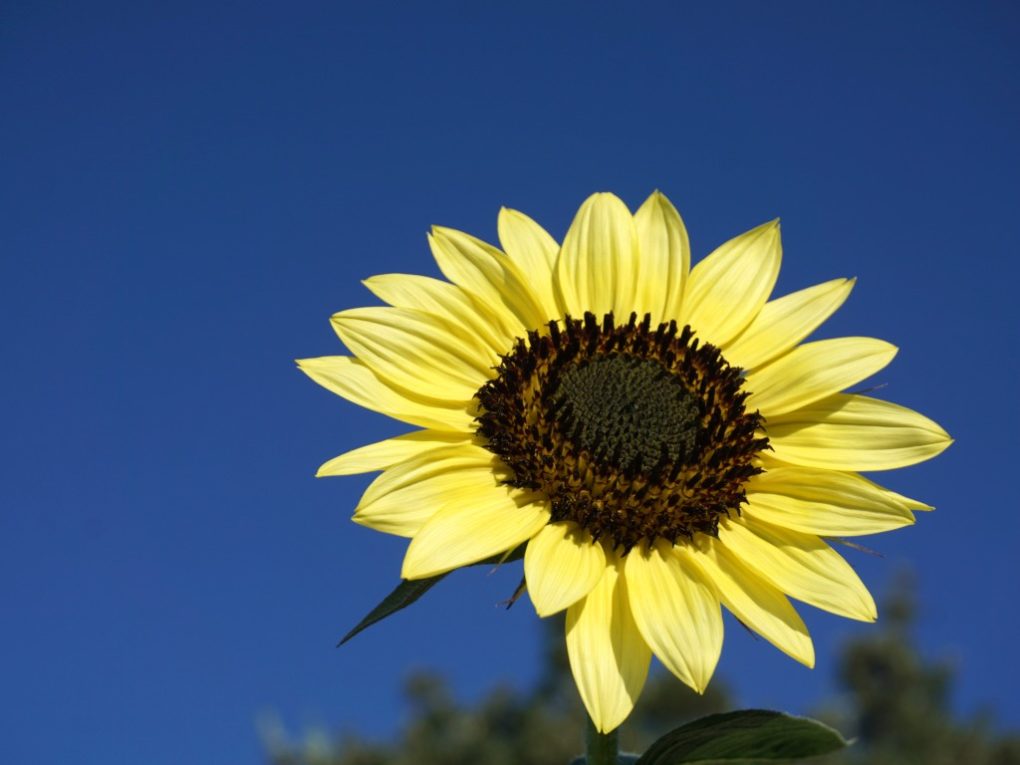
Pollen-free sunflowers are a type of sunflower that does not produce pollen, making them a great option for people who suffer from allergies or have sensitivities to pollen. Instead of pollen, they produce a double row of petals around the center disk, giving them a unique and attractive appearance.
Pollen-free sunflowers require the same growing conditions as traditional sunflowers, including full sun and well-draining soil. When planting, it is important to space them at least 18-24 inches apart to allow for proper growth and development. They should be watered regularly and fertilized occasionally to support their growth.
Pollen-free sunflowers can be used in various ways in the garden, including as a focal point or accent plant, in mixed flower beds, or cut flower arrangements. They are also great for attracting pollinators, such as bees and butterflies, to the garden, as they still produce nectar.
While pollen-free sunflowers do not produce pollen, they may still produce some allergenic proteins that can cause allergic reactions in some people. For example, if you have severe allergies or sensitivities to sunflowers, it is best to consult a healthcare professional before planting pollen-free sunflowers in your garden.
